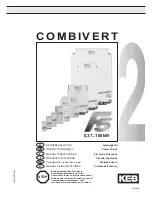
2. Serial Protocols
ROS® v3.11User Guide
55
RMC30
The Raw Socket mechanism transparently passes data. It does not attempt to determine
where to demarcate packets in the data received from connected devices. Given this
transparency, any protocol can be encapsulated within Raw Socket.
2.2.3.3.2. Transport for Protocols with Defined Links
All protocols with defined links (source and destination addresses are part of protocol) can
use either TCP or UDP to transport data.
The Device Address Table contains addresses and locations of devices configured (or learned)
for specific protocols.
If a protocol is configured to use TCP to transport data, the server will start listening to the
IP Port configured for the protocol. At the same time, TCP connections will be placed to all
IP addresses where devices for that protocol are attached. RuggedServer will keep only one
connection open to one IP Address on one IP Port.
2.2.3.3.3. Use of Differentiated Services Code Point (DSCP)
RuggedServer has the ability to set the DS byte in the IP header of outbound IP packets.
The value can be configured on an ingress serial port, and/or for a protocol. Which value will
be used depends on the protocol configured on a port and the transport configured for the
particular protocol.
UDP/IP transport supports a DSCP setting per serial port or per protocol. If a configuration
contains a DSCP setting per serial port as well as per protocol then the system will use
whichever setting has a higher DSCP value.
TCP/IP transport supports per protocol DSCP setting. RawSocket and Modbus Server protocol
properties are configured per port as well, so they always support DSCP setting per serial port.
2.2.4. Force Half-Duplex Mode of Operation
A "force half-duplex" mode of operation allows use of extensions that create echo loops (as
optical loop topology that utilizes the RMC20 repeat mode function).
Figure 2.8. Optical Loop Topology
















































